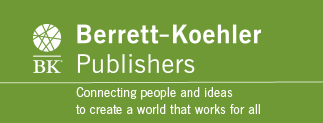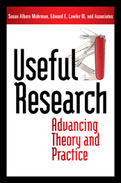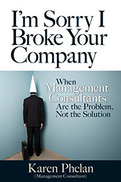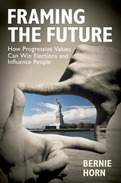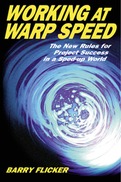2011
Takes a stand on a major controversy in academia: should organizational research aspire to be relevant to practitioners?
Features a who's who of leading management scholars Takes a stand on a major controversy in academia: should organizational research aspire to be relevant to practitioners? A sequel to the seminal book, Doing Research That is Useful for Theory and Practice, also edited by Ed Lawler, Susan Mohrman, and Associates For decades there has been an ongoing, at times heated, debate over how relevant to real-world organizational concerns academic organizational research should be. The contributors to this book argue that in order to keep organizational research relevant to both theory and practice, research must deviate from the orthodoxy of traditional positivistic research. The true test of whether knowledge is useful to practice is not whether it is “theoretically” impactful but whether it is theoretically impactful and results in improved organizational effectiveness. The contributing authors were selected for their demonstrated ability to conduct useful research and their distinguished academic careers. Part I of the book features active scholars who describe the choices they make and the tactics they employ to ensure that their work advances both theory and practice. In part II, four highly respected researchers reflect on how they approached their careers so that they could have a broad impact on practice and still maintain academic rigor. Part III describes pathways to bring academic knowledge to practice—working with consultancies, executive PhD programs, OD specialists, and professional associations, as well as framing academic concepts in ways that are attention-grabbing, memorable, and credible to practitioners. Part IV looks at institutional constraints and enablers: the prospects for useful research in traditional academic settings like business schools, peer-reviewed journals, and the Academy of Management. Finally, part V sums up the themes of the book and the challenges and opportunities facing researchers who aspire to do research that advances both theory and practice. Contributors: Jean Bartunek, Michael Beer, George Benson, John Boudreau, Wayne Cascio, Thomas Cummings, Amy Edmondson, Lynda Gratton, J. Richard Hackman, Gary Latham, Phillip Mirvis, Allan M. Mohrman, David Nadler, James O’Toole, C. K. Prahalad, Denise Rousseau, Sara Rynes, Edgar Schein, Ramakrishnan V. Tenkasi, Michael Tushman, Andrew Van de Ven, Ruth Wageman, Ian Ziskin2006
- Provides a blueprint for entrepreneurs who want to grow their socially responsible business while remaining true to their principles
- Based on interviews with top executives at over thirty leading companies, including American Apparel, Give Something Back, Wild Planet Toys, Organic Valley Family of Farms, and Working Assets
- Offers nine key lessons that can be applied by businesses in any industry
2008
Polls consistently show that most Americans are progressives at heart. By margins of at least two to one, we favor affordable healthcare for all, even if it means raising taxes; want federal action to combat global warming; support stricter gun control; don’t want Roe vs. Wade overturned; and the list goes on. So why is it so hard for progressive candidates to win elections?
Because, says Bernie Horn, most progressives don’t know how to explain their ideas in ways that resonate with “persuadables”—the significant slice of the electorate who don’t instantly identify as Democrats or Republicans. These are the voters who swing elections. There’s been a lot of theoretical discussion about framing lately, but Framing the Future isn’t theory—the concepts outlined have been used successfully by progressive candidates across the nation, even in such conservative bastions as Montana, Arizona, and Florida.
Drawing on rigorous polling data and his own experience as a veteran political consultant, Horn explains how persuadable voters think about issues and make political decisions and why, as a result, the usual progressive approaches are practically designed to fail with them. He offers a crash course in the nuts and bolts of framing and shows how to use three bedrock American values—freedom, opportunity, and security—to frame progressive positions in a way that creates a consistent, unified political vision that will appeal to persuadable voters. He even offers advice on specific words and phrases to use when talking about a variety of issues and ideas.
2001
- Introduces four "Rules of Warp Speed" that can help readers break through the following common barriers to success:
- Work overload
- Lack of support
- Poorly defined goals
- Blame and finger pointing
- Unrealistic deadlines
- Endless meetings
- Poor communication
- Constant fire fighting
- Incomplete planning
- Constantly shifting targets or goals
- Offers a startling exercise-The Project Game-that demonstrates how to keep fires from burning out of control and reduce the number of fires you fight each day
